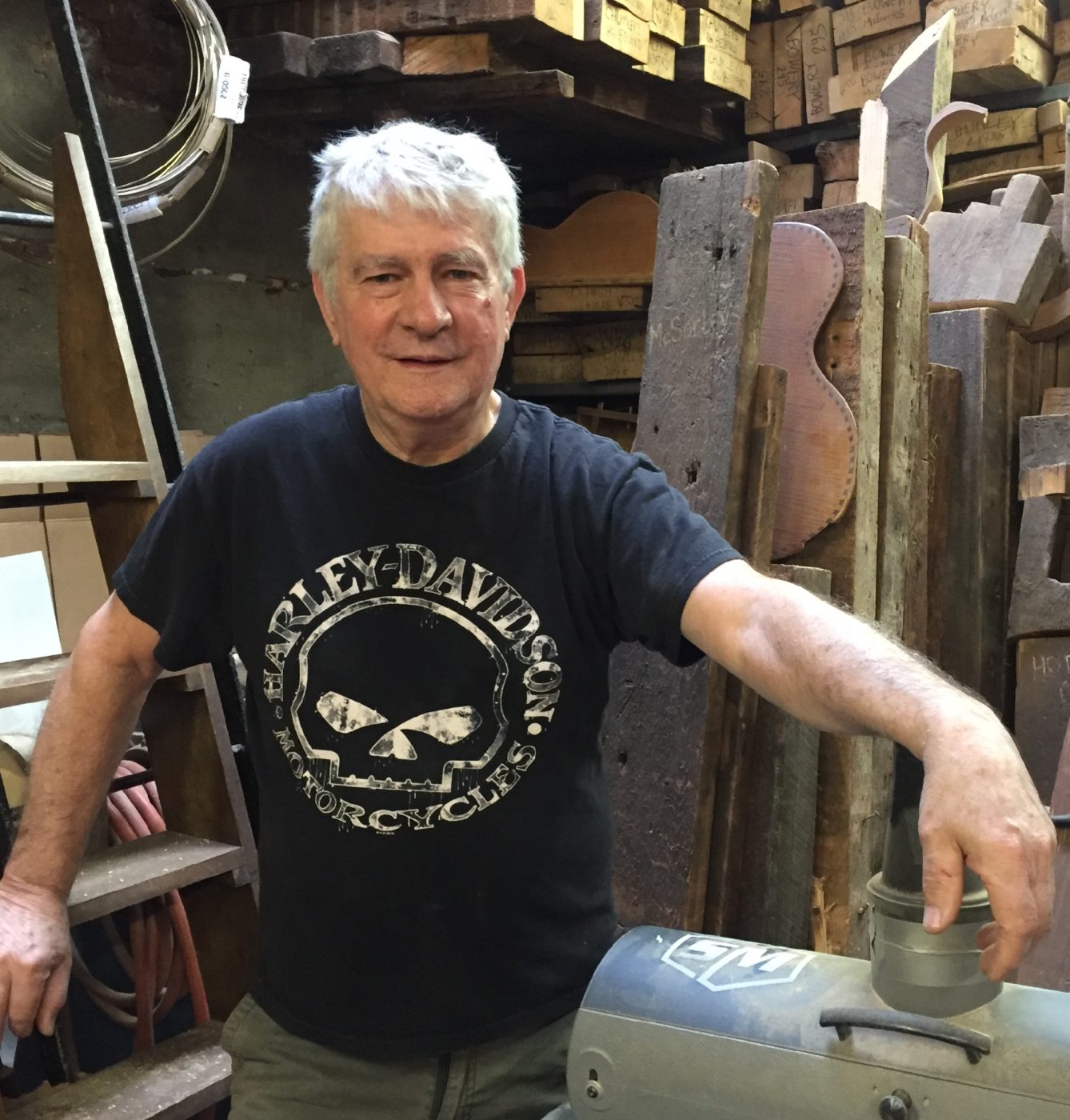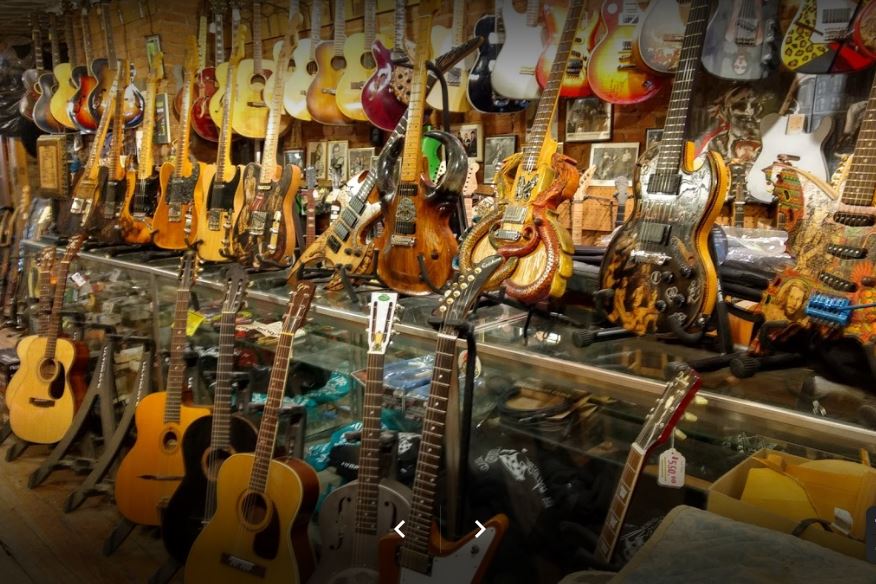Oral History with the King of Carmine Street Custom Guitars, Rick Kelly
Village Preservation shares our oral history collection with the public, highlighting some of the people and stories that make Greenwich Village, the East Village, and NoHo such unique and vibrant neighborhoods. Each includes the experiences and insights of leaders or long-time participants in the arts, culture, preservation, business, or civic life.
Our latest oral history follows Rick Kelly through his Long Island childhood, college at the Maryland Institute College of Art in Baltimore, establishing his first shop in an outbuilding on a farm in Maryland, his first NYC guitar shop in 1976, and his 1990 move to 42 Carmine Street where he established the world-renowned Carmine Street Guitars.

Rick was born in Queens but grew up in Long Island by the Great South Bay, near Fire Island. He would visit NYC often with his mother and grandparents, and was into music as a teenager in the late 60s. He would come into the city to see acts like Jimi Hendrix and the Chambers Brothers at venues such as the Bitter End and the Electric Circus.
Rick made his first musical instrument, a ukulele, in high school. In college he began making Appalachian dulcimers, a folk instrument that originated in Appalachia. After college he had a brief job teaching instrument-making at the Smithsonian, but realized that if he kept on that path he would miss out on building guitars. In 1976 he opened Naked City Guitars on Downing Street. The business lasted for about two and a half years until, according to Rick he “got in some trouble with some ex-mafia guys. They were just stealing stuff, and (I) wound up having to leave the city.”
Rick then bounced around between Long Island, California, and NYC. Through the 1980s Rick owned a shop on Long Island where they built nothing but solid body electric guitars. This gave him the building and production experience that he would use to turn his next venture into a huge success.

In 1990, Rick opened Carmine Street Guitars at 42 Carmine Street in a commercial space that was previously occupied by a Walt Disney set designer, a cabinet maker, and a speakeasy during Prohibition. At that time Carmine Street was filled with record shops and Matt Umanov was right around the corner. For years to come Matt Umanov Guitars and Carmine Street Guitars had a great relationship, referring business to each other. We also conducted an oral history with Matt Umanov, which you can check out here.
In the mid 90’s Rick discovered reclaimed New York City wood, mainly white pine, was perfect for building his guitars. Modern guitars are often built using “new” kiln-dried wood which dries out the wood but leaves pockets filled with resin. It naturally takes many years for the resin to dry out, crystallize, and leave the pores of the wood. The pores are important in a wooden musical instrument because it is within these pores that the vibrations happen, which allow the instrument to created a rich, unique sound.

As buildings in the city undergo major renovations, Rick seeks out the wood that would otherwise end up in a dumpster and collects it for the construction of his guitars. He estimates 80-90% of his custom guitars are built with reclaimed white pine. Much of this white pine, called the “King’s Wood,” was barged down the Hudson River 200 years ago from the forests of the Adirondacks. This wood was used as framing in most of the New York City buildings constructed in the 1800’s.

He builds custom guitars with wood that people have brought to him from meaningful places such as Sag Harbor Cinema and a Methodist church that had burned down. He has also used wood from famous sites such as Chumley’s and the Chelsea Hotel. He has worked and interacted with local artists and actors such as Jim Jarmusch, John Belushi, and David Bowie
The 2018 documentary Carmine Street Guitars has brought a new level of fame to Rick Kelly. In addition to his regular clientele, he also now serves a steady stream of admirers from around the world.
Click here to read the full transcript or here to listen to the oral history.
